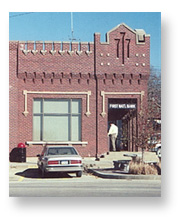Making the Most of Opportunities…
Energy Efficiency and Historic Preservation
All buildings change either by the hand of Mother Nature as they deterioriate or by the hand of man as they are altered to serve new purposes.

Historic structures change to meet the requirements of modern codes and comfort levels. Most changes are made for energy efficiency, code compliance or improved convenience and can be made within the historic context of the building’s original form.
Energy Efficiency and Historic Preservation: A Planning Guide for Buildings was developed for individuals interested in increasing energy efficiency while maintaining the historic integrity of our nation’s buildings.
The planning guide gives a broad view of steps to take when planning and implementing energy efficiency projects in historic buildings. It discusses the importance of the "Whole Building Approach" which entails taking a current building inventory, determining project goals and developing a plan for the building. In order to increase the energy efficiency of a building and maintain its historic character, trade-offs may be necessary.
The planning guide was created to provide an easy to follow checklist for building owners, design-build professionals, architects and any other interested parties to follow when renovating a historic structure. Particular emphasis is placed on enhancing energy efficiency while maintaining the historic attributes of buildings.
A copy of Energy Efficiency and Historic Preservation: A Planning Guide for Buildings can be found at Planning Guide